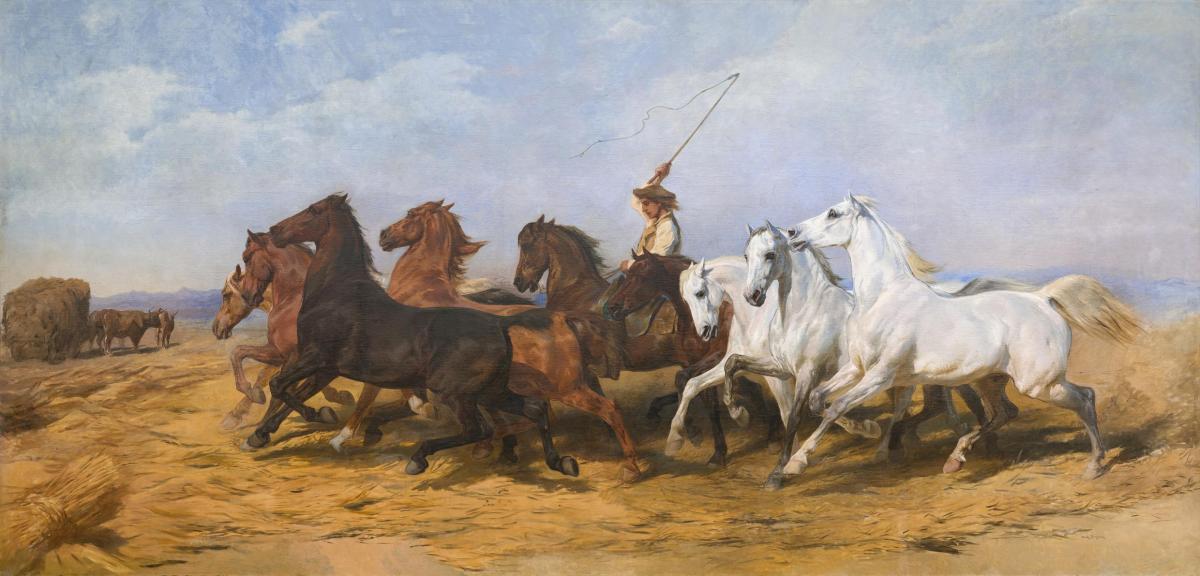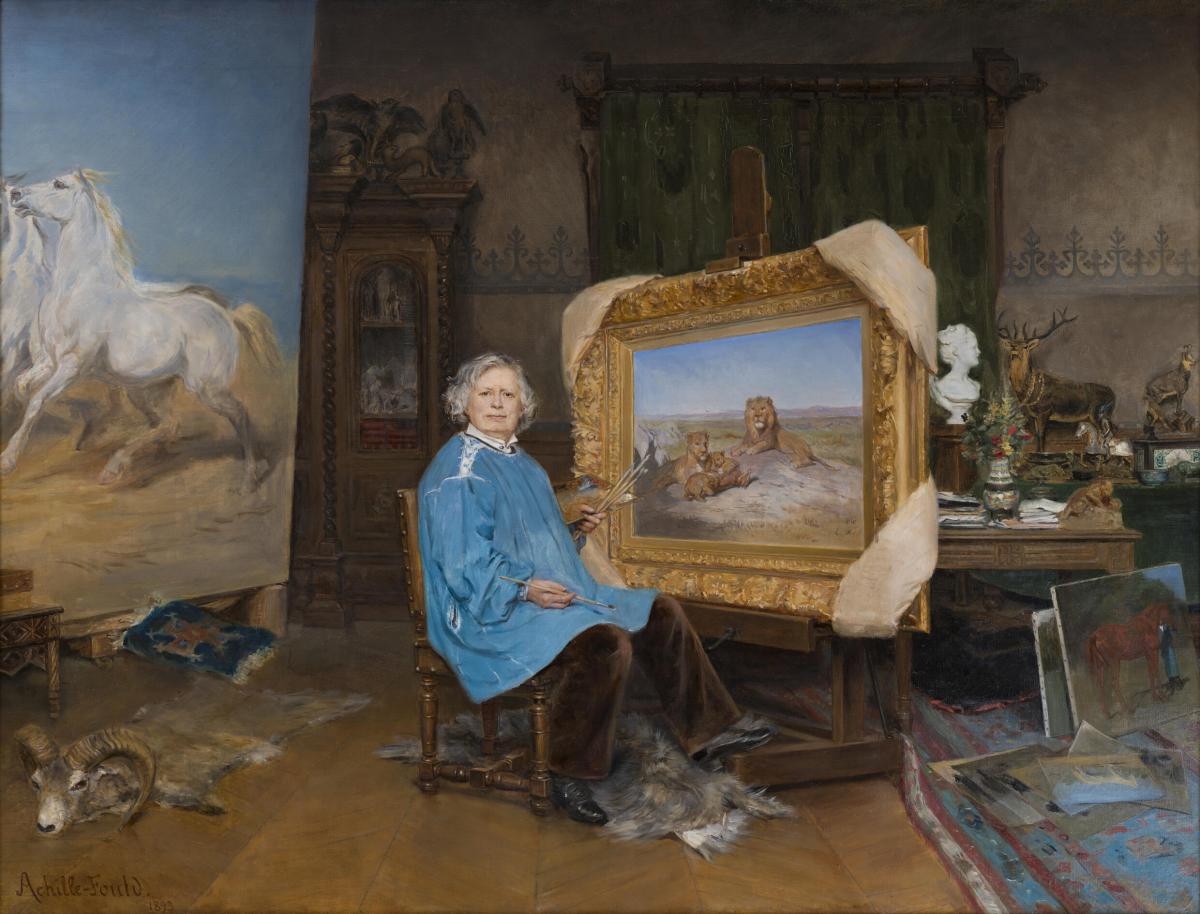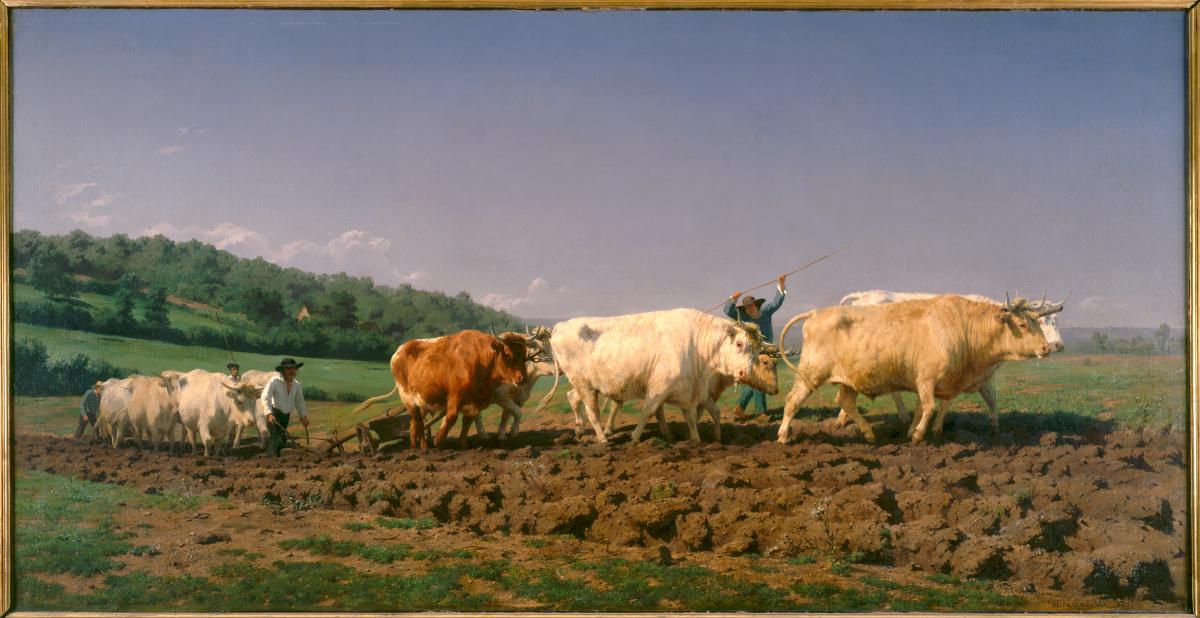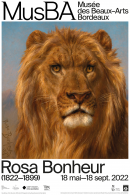Rosa Bonheur (1822-1899)
May 18 – September 18, 2022
To mark the bicentenary of the birth of Rosa Bonheur (1822-1899) in Bordeaux, the Musée des Beaux-Arts in her native city and the Musée d'Orsay, Paris, are organising a major retrospective of her work. The Château Musée Rosa Bonheur in Thomery (Seine-et-Marne), where the artist lived for almost half a century, is a guest partner in the exhibition, as well as Musée départemental des peintres de Barbizon. This anniversary has been included in the 2022 calendar of France Mémoire.
This major national and international event honours an extraordinary, innovative and inspiring artist. A true icon of women's liberation, Rosa Bonheur placed the living world at the heart of her work and her existence. She was committed to the recognition of animals in their uniqueness. With her great technical mastery, she was able to render both the anatomy and the psychology of animals. This exhibition allows the public to (re)discover the power and richness of her art, as well as her life as a free woman, which has become mythical, and her work, which is formidably popular in the United States and in the United Kingdom.
This exhibition will be presented in 2022 in Bordeaux and then in Paris. It will take place in the Galerie des Beaux-Arts and the north wing of the museum and will bring together almost twohundred works - paintings, graphic arts, sculptures, photographies and documents - from the most prestigious public and private collections in Europe and the United States. Rising contemporary issues, this exhibition is part of the international trend of exhibitions devoted to women artists and a renewed interest in the theme of animals, which will be honoured at the Fontainebleau Art History Festival in 2022.

Rosa Bonheur, La Foulaison du blé en Camargue, 1864-1899, Musée des Beaux-Arts de Bordeaux.
A powerful and innovative body of work
Born into a family of artists, Rosa Bonheur produced an abundant body of work, drawing her inspiration from the rural world of French provinces, Pyrenees or Scotland, but also from the imagination of the great spaces of the American West, as evidenced by her meeting with Buffalo Bill in 1889. Rosa Bonheur used her talent to the full and had an exemplary career. She competed with the greatest masters of the animal painting genre, long reserved for men, and took on monumental formats, giving her works the grandeur of history painting.
A lover of the beings
Her world view demonstrates an exceptional vision of flora and fauna, both wild and domestic. Fascinated by animals, Rosa Bonheur gathered around her, in her property in By, a extraordinary menagerie of dozens of different species, including dogs, deers and wild animals. Placing animals at the heart of her artistic creations by integrating them into spectacular compositions or isolating them in genuine portraits, Rosa Bonheur was able to create an expressive style, devoid of sentimentality and of great realism, informed by scientific discoveries and by the new attention paid to the animal species of each territory, calling into question the hierarchy between species.
The exhibition plays on differences in scale, the artist having painted both very small formats and monumental works, most often panoramic and dynamic, as well as true full-height portraits of animals. In La Foulaison du blé en Camargue, Rosa Bonheur depicts the beauty and power of half-wild horses. The artist sees them belonging to the rural world and to peasant life, while at the same time exalting their telluric strength. She celebrates agriculture and the majesty of mother earth.

Georges Achille-Fould, Rosa Bonheur dans son atelier, 1893, Musée des Beaux-Arts de Bordeaux.
An extraordinary personality
Celebrated during her lifetime on both sides of the Atlantic, the exhibition aims to reveal little explored or even unknown aspects of this fascinating personality, who was able to assert herself both as a free woman and as an officially recognised artist in a very constrained century. The first woman artist to receive the prestigious Légion d'honneur, Rosa Bonheur was able to develop a genuine commercial strategy very early on and to associate herself with the most eminent dealers and collectors in order to dominate the art market and to win her financial and creative independence. A real "star" of her time, her career was crowned with the greatest awards. A virtuoso and demanding artist, she organised her life around her work and the relentless quest for perfection, supported by women, especially her lifelong companion Nathalie Micas, who lived by her side for over fifty years, and her “sister of the brush”, the American painter Anna Klumpke, to whom she entrusted her legacy.
Rosa Bonheur was rapidly seen as a role model in the quest for independence for women, and for artists in particular. Articles and reviews, some French, but largely British and and Northern American, bear witness to this inspirational force for future generations. The image of the artist was so widespread that, in addition to numerous painted, photographed or engraved portraits, Rosa Bonheur's work, like her portrait, became the subject of what today would be called merchandise.
One of the original features of the exhibition is the presentation of a large selection of studies and sketches, both painted and drawn, which allow us to appreciate the role of drawing in the artist's creative process, and to see pages of rare beauty. Superb, completely unpublished drawings, recently discovered at the Château Rosa Bonheur, are exhibited for the first time. More unusual aspects of her work, often intended for a more intimate sphere (paintings on pebbles, chestnut sculptures, etc.) are also presented. Finally, the exhibition emphasises Rosa Bonheur's personality, her humour, her taste for caricatures and the fruitful relationships she had with personalities from the musical, literary and scientific worlds of the time.
A body of work that still resonates today
200 years after her birth, Rosa Bonheur's art and personality resonate with many societal issues that are relevant today more than ever: the place of women in art and society, sexual orientation, the animal cause, rurality and ecology. The exhibition is accompanied by a cultural programme that crosses disciplines and projects from the educational and social fields, in line with the actions in favour of gender equality that the museum has been carrying out for the past six years.
The exhibition is accompanied by a catalogue which is the first scientific publication to provide an overview of the many aspects of Rosa Bonheur's work.
Dates
Galerie des Beaux-Arts and North Wing of the Musée des Beaux-Arts, May 18 – September
18, 2022.
Musée d’Orsay, October 17, 2022 - 15 January 15, 2023.
Curators
Sophie Barthélémy, Director of the Musée des Beaux-Arts
Sandra Buratti-Hasan, Deputy Director, Curator.
Leïla Jarbouai, Curator at the Musée d'Orsay.
With the collaboration of Katherine Brault, President of the Château Musée Rosa Bonheur,
assisted by Michel Pons.
In addition
Two exhibitions at the Château de Rosa Bonheur in Thomery By, Le musée des œuvres perdues
(1 March - 1 September 2022) and Rosa Bonheur intime (2 September - 31 December 2022).
Download the press release of the Rosa Bonheur (1822-1899) exhibition here .

Rosa Bonheur, Labourage nivernais, Musée d'Orsay, Paris.








